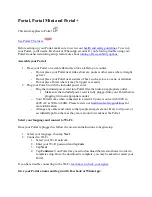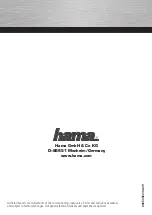
Personal videoconferencing system-
A
system designed to connect a single person into a teleconference.
Most desktop video conferencing systems are personal systems.
Frame rate -
The number of images per second displayed in a
video stream.
Approximately 24 frames per second (fps) is considered full-motion
video.
POTS (Plain Old Telephone Service)-
Conventional analog telephone service.
ISDN (Integrated Services Digital Network)
-
A type of digital telephone service available in two speeds:
128-Kbps basic-rate interface (BRI) and 1.54-Mbps primary-rate
interface (PRI).
H.261-
Leads the pack. H.261 is the standard for video codecs,
with the compressed video signal operating over one or more
64-kbps ISDN B-channels. H.261 defines two picture or resolution
structures that are compatible with all three worldwide television
display formats. The picture structures are the Common
Intermediate Format (CIF) and the Quarter Common Intermediate
Format (QCIF). CIF is also referred to as “full CIF” (FCIF).
H.323-
Standard that provides a gateway for LAN/WAN
videoconferencing. Desktop video conferencing on the LAN must
adjust to the constantly -changing available bandwidth. This means
LAN-based videoconferencing requires special compression
technology. H.323 also covers Internet video-conferencing. Early in
1996, Intel and Microsoft, along with more than 70 other
companies, announced support for the standard. Inter and Microsoft
also collaborated on the H.323 stack that would become part of
Microsoft’s operating system.



































